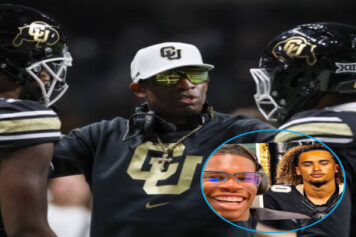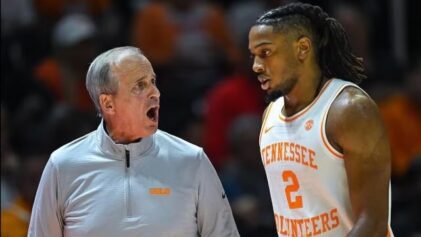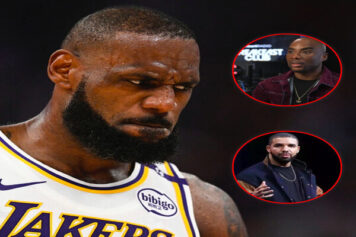Back in the 1990s, in grassroots hoops circles, Felipe Lopez was more popular than Menudo ever was. After premiering at the Tribeca Film Festival last week, ESPN will debut the next installment in the Peabody and Emmy award-winning 30 for 30 series tonight with “The Dominican Dream” which chronicles the incredible journey of New York City hoops prodigy Felipe Lopez.
“The Dominican Dream” will air at 9 p.m. ET on ESPN and ESPN Deportes. This the first time 30 for 30 debuted the English and Spanish-language versions of a film simultaneously on both networks.
Our next 30 for 30, "The Dominican Dream" premieres April 30th on ESPN pic.twitter.com/dufHGRRVrA
— 30 for 30 (@30for30) April 17, 2019
Directed Jonathan Hock, who has given us a number of classics under the 30 for 30 umbrella such as “Survive and Advance,” “One and Not Done” and “Of Miracles and Men”, “The Dominican Dream” is a portrait of Dominican immigrants of New York in the ‘80s and ‘90s, seen through a loving family whose youngest son, Felipe Lopez, became the top ranked high school basketball player in the nation and was compared to a young Michael Jordan.
Felipe was one of the best and most accomplished players in NYC prep basketball history. In high school and college, he was embraced as an immigrant hero. But when his pedestrian career in the NBA fizzled, he was cast aside by some as a failure who never lived up to the considerable hype.
“What drew me to the story of Felipe Lopez and his family is that it’s a success story disguised as a story of failure and disappointment,” said director Jonathan Hock in a statement released by ESPN. “It’s a classic American immigrant tale that shows that – even if you’re hailed as ‘The Dominican Michael Jordan’ and pictured like a superhero on the cover of Sports Illustrated – true success in life is something much greater than being the best at playing a game.”
The film features interviews with, among others, former Dominican baseball prodigy Alex Rodriguez, Chauncey Billups, Chris Mullin and famed hoops marketing guru and sneaker company executive Sonny Vaccaro.
“Jon Hock has an unbelievable knack for finding stories we all think we remember, but hardly appreciated until he unearthed the full stories of their humanity and vulnerability,” said ESPN Films vice president and executive producer Libby Geist. “Felipe’s story of success on the court is a great one, but his impact on the Dominican community and what he still represents to so many is something I didn’t grasp until seeing the film. We can’t wait to share this story with our audience.”
Back when he was a senior at Harlem’s Rice High School, Lopez once told Sports Illustrated, “I want to change the unhappy world around me, so I must use my creativity in class and on the court to bring hope.”
Prior to LeBron, before the Zion Williamson dunk mixtape phenomenon, the world of prep basketball had never experienced the hype and media attention being heaped upon the teenager who had come to New York from the Dominican Republic just a few years prior.
Prior to arriving in New York during the summer 1989, before starting the eighth grade, he spoke little English.
As SI’s Tim Crothers wrote:
Since that day his vocabulary has nourished along with his body. He has added 6½ inches and 40 pounds to reach his current 6’5″, 180-pound stature, expanding skyward so quickly that one day a few years back he pulled a pair of pants from his closet and didn’t recognize them as his own. Felipe’s lithe, elastic build recalls that of Michael Jordan, prompting his mother, Carmen, to say, “If he would eat more, he could be like the man who jumps.”
Like so many kids in the Dominican Republic, Felipe was encouraged to play baseball but was quickly discouraged when he shagged a throw with his nostrils. He gravitated to hoops, the more so once he reached the States. Three years later, he declined a $500,000 offer to forgo the rest of high school and the prospect of college to play pro basketball in Spain. Last season he averaged 25.1 points, 8.7 rebounds and live love-struck Division I coaches per game as he led the Raiders to a 21-5 record.
“Felipe has tremendous potential,” says recruiting maven Tom Konchalski. “He has the speed of a world-class sprinter and can leap tall buildings in a single bound. He is already an icon in the Latino community, more popular than Menudo ever was.”
Felipe clearly has the talent to make a big name for himself and establish a presence in basketball for the Hispanic community, of which he is already the pride and hope. So revered is Felipe in his native Dominican Republic that when he returned to his hometown of Santiago this summer and joined a pickup game, more than 1,000 neighbors came to watch. The game ended when Felipe tore down the rim on a dunk and scraped his arm. A woman came out of the bleachers to stanch the bleeding, then asked Felipe if he would autograph the bloody hankie.
Felipe, in turn, respects his heritage and vows he will attend college in a city with a large Hispanic community. He has tailored his choices to that end. “I want a lot of Hispanic kids to be able to see me play,” he says. “My greatest joy is when the children come to me and say, ‘I’m going to be the next Felipe.’ “
Lopez was the USA Today national high school player of the year after scoring 2,486 points during his prep career. He earned MVP honors at the 1994 McDonald’s High School All-America game, was profiled in The New Yorker and was featured on the cover of Sports Illustrated prior to playing a single game at St. John’s.

Future NBA stardom and untold riches were just a few years away. And then, the luster of the fairy tale dimmed.
St. John’s went went 14-14, 11-16 and 13-14 during his first three college seasons.
As SI’s B.J. Schecter wrote during Lopez’s senior season:
Ridiculed and booed for his poor play, and blamed for St. John’s failures, Lopez lost his confidence, and his scoring average declined each year, from 17.8 as a freshman to 15.9 as a junior. Over those three seasons he made only 27.3% of his three-pointers, but he never lost faith in himself. “There were a lot of times I went home crying because I wasn’t doing what was expected of me,” says Lopez. “I got away from my work ethic a bit, but I worked through it. I appreciate what I went through because it made me a stronger person and a better player.”
When the 1996-97 season ended in another disappointment, Lopez
went to work in the off-season. He took 500 jump shots a day,
all the while visualizing playing in the NCAA tournament. That
dream came closer to reality after he scored 17 points in last
Saturday’s 77-69 win over the Mountaineers, which vaulted St.
John’s (18-7) into second place in the Big East 6 with a 10-4
record. While many fans may always see him as a flop, Lopez
became St. John’s third-leading career scorer during the
victory, trailing only Chris Mullin and Malik Sealy.“For someone who has been through the meat grinder, he has come
out remarkably unaffected,” says his coach, Fran Fraschilla. “He
has a personality you can’t help but like.”Despite what has happened, Lopez says he doesn’t regret going to
St. John’s and never considered leaving. He says he has an
obligation to his family and his Dominican heritage to make the
school a winner, something neither he nor his teammates have
lost sight of.“The driving force in our program right now is to
get Felipe into the NCAA’s,” says Fraschilla. “The final chapter
of the Felipe Lopez story hasn’t been written yet, and we’re
doing everything in our power to make it a happy one.”https://www.youtube.com/watch?v=sy95RL7ftbU
And today, the final chapter of his story has still yet to be written. But with “The Dominican Dream” on tap, we’ll get so see a side of his story never seen before.
Some can choose to call Felipe an NBA flop. But I prefer to call him a human success.



